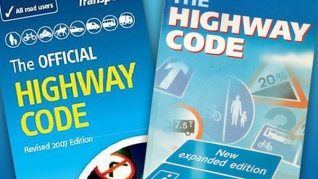To be a good driver means ability to drive smoothly and safely, which is impossible until a driver gets used to putting into practice the highway code as well as imbibe the habits of concentrating, anticipation, minding controls of the vehicle
[dropcap]Y[/dropcap]ou cannot become a skilful driver in a short space of time; it takes a lot of practice behind the wheel of a car. Unfortunately drivers, who see learning time as merely a means to acquire driving licence may never become skilled but always remain an accident waiting to happen.
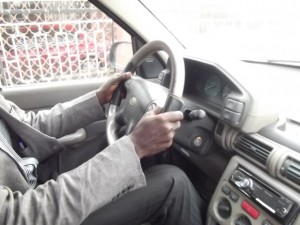
Beyond passing a driving test, there are essential characteristics that a driver needs to imbibe to be safe on the road:
CONCENTRATION
Concentration is to be able to keep your mind on what you are doing; in this case, driving. If you are a student and your exams are getting near, or you are looking forward to your football team going to the top of the league on Saturday, that’s fine, but don’t think about it whilst you are driving.
If you are a mum driving to the shops thinking about what you need to buy; tea, coffee, sugar, etc. Or am I going to be late picking the kids up: don’t think about it whilst you are driving. If you are Joe the plumber going to fix Mr Leak’s radiator, wondering if it’s the valve or the radiator itself and maybe you’re thinking of that Five thousand Naira still owed to you by Mr Debt: don’t think about it whilst you are driving.
If you are not CONCENTRATING on your driving, and you do hit a child, or a car, who is to blame? The six-year-old child was too young to be out on her own on that busy road, that could be true, but if you had been thinking about your driving, could the accident have been avoided?
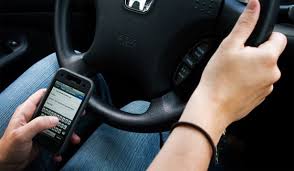 If you did hit another car, the other driver may also have some responsibility as his mind may have been elsewhere.
If you did hit another car, the other driver may also have some responsibility as his mind may have been elsewhere.
A way of learning how to concentrate on your driving is to give a running commentary as you drive along, whether on your own or with someone else. You will probably learn from the comments that come back to you; some may please you and some may not. This is another way of hearing other people’s views on different situations.
Lesson from the above: Keep your mind focused on your driving, and no doubt fewer accidents will occur.
ANTICIPATION– DEFENSIVE DRIVING
Anticipation is reading into things that are happening around you, which in turn will lead you into defensive driving, another very important quality in a good driver. Imagine setting off in your car with your eyes closed; what are you going to ANTICIPATE? Nothing, is the obvious answer, so what does this prove? It proves that if you look no further than the end of your bonnet you are going to have very limited information to ANTICIPATE. To enable you to read  the road well, it is vital to constantly keep changing your areas of vision between short, medium and long distances. This will give you a greater picture of what is happening around you and maybe by doing this you can ANTICIPATE what is going to happen; this should naturally lead you into a more defensive way of driving. Defensive driving is all about taking precautions before they happen in the interest of your well being and other road users. By driving in the above manner you will also become a far smoother driver because you are acting on things that can be seen well ahead. There are literally hundreds of clues all around if you know where to look. Feet under parked cars, reflections in windows, headlights coming around corners; all signs to give you information to act upon.
the road well, it is vital to constantly keep changing your areas of vision between short, medium and long distances. This will give you a greater picture of what is happening around you and maybe by doing this you can ANTICIPATE what is going to happen; this should naturally lead you into a more defensive way of driving. Defensive driving is all about taking precautions before they happen in the interest of your well being and other road users. By driving in the above manner you will also become a far smoother driver because you are acting on things that can be seen well ahead. There are literally hundreds of clues all around if you know where to look. Feet under parked cars, reflections in windows, headlights coming around corners; all signs to give you information to act upon.
The next two examples show how to interpret situations that you see. The first example is nothing to do with driving but it makes the point very well.
You show a child of 3 or 4 years old a picture of a lad running down the lane with apples falling out of his pockets, with a farmer chasing him with a big stick; it won’t mean much to him. Show him the same picture when he is 8 years old and more ‘streetwise’, then he will know the farmer is going to give the lad a good hiding for pinching his apples.
Now let’s consider an inexperienced driver approaching a Zebra Crossing with Mr Reckless a few paces from the crossing. What should the driver be reading into the situation? The driver should ANTICIPATE Mr Reckless dashing straight onto the crossing without looking both ways first. The driver should have checked the mirror and started to reduce speed so that if Mr Reckless does dash onto the crossing without looking, you are ready for him. If Mr Reckless does pause at the kerb edge, fine you are still prepared. If he walks straight past the crossing so what, it might have cost you a few seconds but you have been well and truly in charge of a potentially dangerous situation due to your CONCENTRATION, ANTICIPATION AND DEFENSIVE DRIVING
SKILL
It is important to be able to use all of the controls smoothly and efficiently. Don’t be happy with the fact that you can change gear. This should be done without jerking your passengers about in the car.
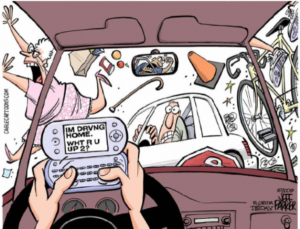
Likewise when braking, accelerating and cornering, you don’t want to see them sway about all over the place. This isn’t SKILLFUL driving. This is probably how you will drive when you start learning and it will continue that way for a considerable time; but with practice it should improve.
Try and think of the last time you were in a car, and when the driver stopped you didn’t even feel it come to rest. To do that consistently takes SKILL and CONCENTRATION. The next time you are out with your partner, suggest pulling up at a convenient place on the left, so that neither of you can feel the car stop, then swap over and you try to do it.
Take this a step further using the rest of the controls including steering, and watch your passengers to see if they are jerking about in their seats. If they are, do something about it, master your controls.
DRIVE SMOOTHLY
The positioning of the car on the road when cornering as well as being in the correct gear and at the right speed are all very important not only from the passenger’s comfort point of view, but for the balance of the vehicle. This manoeuvre does not necessarily have to be carried out at slow speeds, but it should always be safe. The general rule is slow in and quick out of bends, but this is when your SKILLS have been developed to a considerable standard. It is so easy to get it wrong and finish up in the hedge bottom. No doubt many of us have seen cars that have come to grief along the roadside and very rarely is it the fault of the vehicle. In the majority of cases it is driver error, due to lack of SKILL, CONCENTRATION and not ANTICIPATING the situation.
You cannot become a SKILLFUL driver in a short space of time; it takes a lot of practice behind the wheel of a car to develop the above qualities and some people may never acquire them.
ATTITUDE.
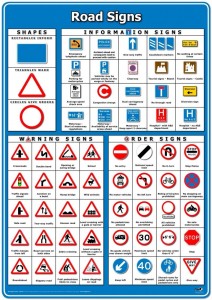 If you don’t have the right attitude, it won’t matter how much knowledge or skill you have; you won’t be a consistently good driver; because your attitude will keep letting you down. You will have to work very hard at changing it, which, I’m sure, can be done with the right attitude, if you see what I mean! Your aim is to stay calm and tolerant in all situations and then you have cracked it. Is this possible? Yes! Although I fear it is more realistic to say most instead of all, but any improvement in attitude is a bonus.
If you don’t have the right attitude, it won’t matter how much knowledge or skill you have; you won’t be a consistently good driver; because your attitude will keep letting you down. You will have to work very hard at changing it, which, I’m sure, can be done with the right attitude, if you see what I mean! Your aim is to stay calm and tolerant in all situations and then you have cracked it. Is this possible? Yes! Although I fear it is more realistic to say most instead of all, but any improvement in attitude is a bonus.
KNOWLEDGE.
Lets talk about KNOWLEDGE of the HIGHWAY CODE. The learner drivers and the newly qualified drivers amongst us will no doubt be quite familiar with the Highway Code because of the recently introduced Theory Test. How many of us who passed our test during the last five years have looked at the Highway Code. Take that a stage further. I passed my motorcycle test in 1957 and my car test in 1959 and I have had to refer to the Highway Code many times due to the career I chose. How many drivers, after obtaining driving license, ever bothered again to look into the Highway Code? There is no doubt about it we could all learn more by reading the Highway Code, and that should help make us better drivers, providing we obey the rules that we had forgotten about, and we learn the new rules that we didn’t know about. A current Highway Code is what every serious driver should have?



